Wednesday May-28 2025 14:10:26
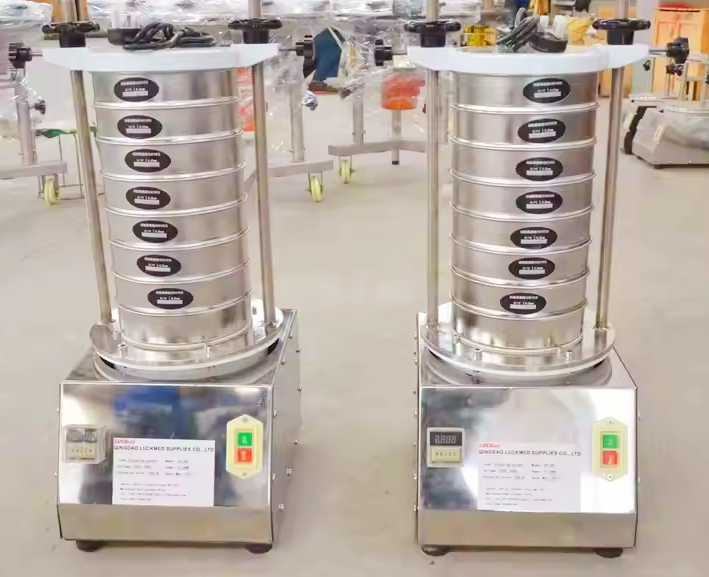
The portable field soil sieve kit is a sieving tool suitable for geotechnical engineering surveys and in-situ testing.It is mainly used to quickly separate and classify soil particles, which is convenient for judging soil type, coarse and fine distribution and gravel content. These kits usually include a series of sieves and collection trays with different apertures to facilitate the preliminary classification of soil samples directly in the field. They are often used for preliminary geological surveys on site before construction, or for rapid screening of backfill materials, coarse particle content, etc.
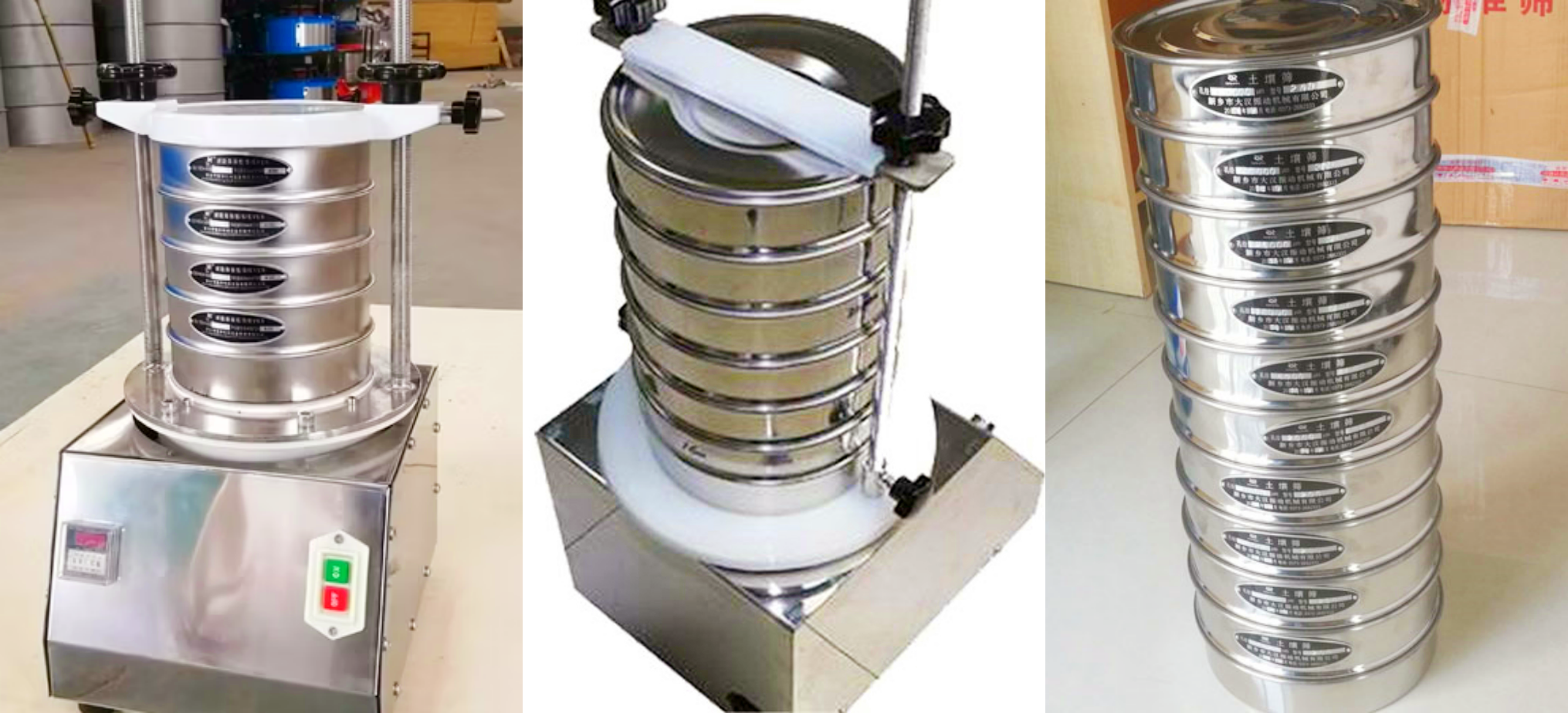
A standard portable soil sieve kit usually includes the following parts:
Sieve: multiple stainless steel or plastic sieves, the apertures from large to small usually include: 4.75mm, 2.00mm, 1.00mm, 0.425mm, 0.25mm, 0.075mm, etc.; generally 4-6 layers (can be combined as needed); commonly 20cm or 30cm in diameter.
Sieve frame: The sieves are fixed and stacked together to form an integral structure
Chassis and cover: The chassis is used to collect the finest particles; the top cover prevents material splashing or contamination during screening.
Sieve shaker: The sieve shaker can shake in the horizontal direction and tap in the vertical direction to simulate the action of manual screening, improving screening efficiency and accuracy.
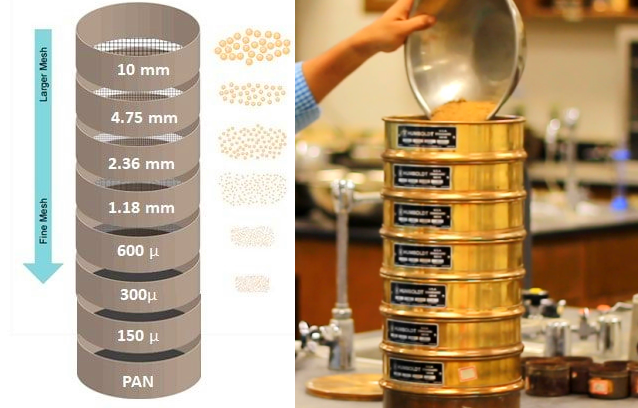
The portable field soil sieve kit plays an important role in geotechnical engineering and has irreplaceable value in many practical applications. Its main functions are reflected in the following aspects:
Quick preliminary classification and evaluation: It can quickly make a preliminary evaluation of the particle size distribution of the soil, such as distinguishing whether it is sand, silt or clay, and their respective proportions.
Guide sampling and exploration: The results of on-site screening can more effectively guide subsequent detailed sampling and exploration work, such as determining which more precise indoor tests are needed to avoid blind sampling and waste of resources.
Construction quality control: In roadbed, foundation or backfill projects, there are strict requirements for the particle size grading of fillers. The portable sieve kit can quickly check whether the transported fillers meet the design specifications at the construction site, detect unqualified materials in time, and avoid quality problems.
Emergency treatment and problem investigation: In the event of sudden geological disasters such as landslides and mudslides, on-site sieve can help quickly understand the particle composition of the soil in the disaster area and provide basic data for emergency rescue and subsequent governance. When an abnormal situation occurs during construction, the relevant soil can be quickly screened to preliminarily determine whether it is related to the soil particle size characteristics.
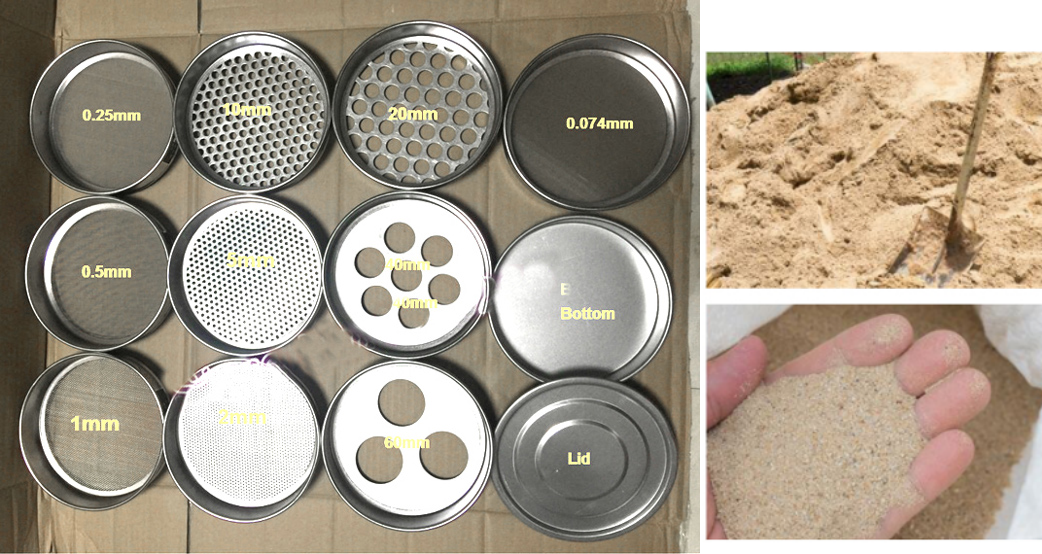
The selection of the mesh size of the portable field soil sieve kit is mainly based on the soil particle size analysis standard. The mesh size is inversely proportional to the sieve hole size. The larger the mesh size, the smaller the sieve hole. In geotechnical engineering, some key sieve hole sizes are used to distinguish different soil particle components.
|
Mesh size |
sieve hole size (mm) |
sieve hole size (µm) |
mainly separated soil particle types |
instructions |
|
4 |
4.75 |
4750 |
gravel/coarse sand |
used to separate large-sized gravel and coarse sand in coarse-grained soil |
|
10 |
2.00 |
2000 |
coarse sand |
commonly used to distinguish coarse sand from medium sand, and to remove larger impurities such as plant debris. |
|
20 |
0.850 |
850 |
medium sand |
used to divide sand soil more finely, which helps to evaluate the grading uniformity of sand soil. |
|
40 |
0.425 |
425 |
Fine Sand |
This is an important sieve number to distinguish between coarse and fine sand. |
|
60 |
0.250 |
250 |
Fine Sand |
Fine sand is further subdivided. |
|
100 |
0.150 |
150 |
Very Fine Sand |
Fine sand close to the limit of silt. |
|
200 |
0.075 |
75 |
Silt/Clay |
Soil passing the 200 sieve is considered fine-grained soil, which has significantly different engineering properties from coarse-grained soil. |
|
Pan |
N/A |
<75 |
Silt/Clay |
Collects all fine-grained soil passing the 200 sieve. |
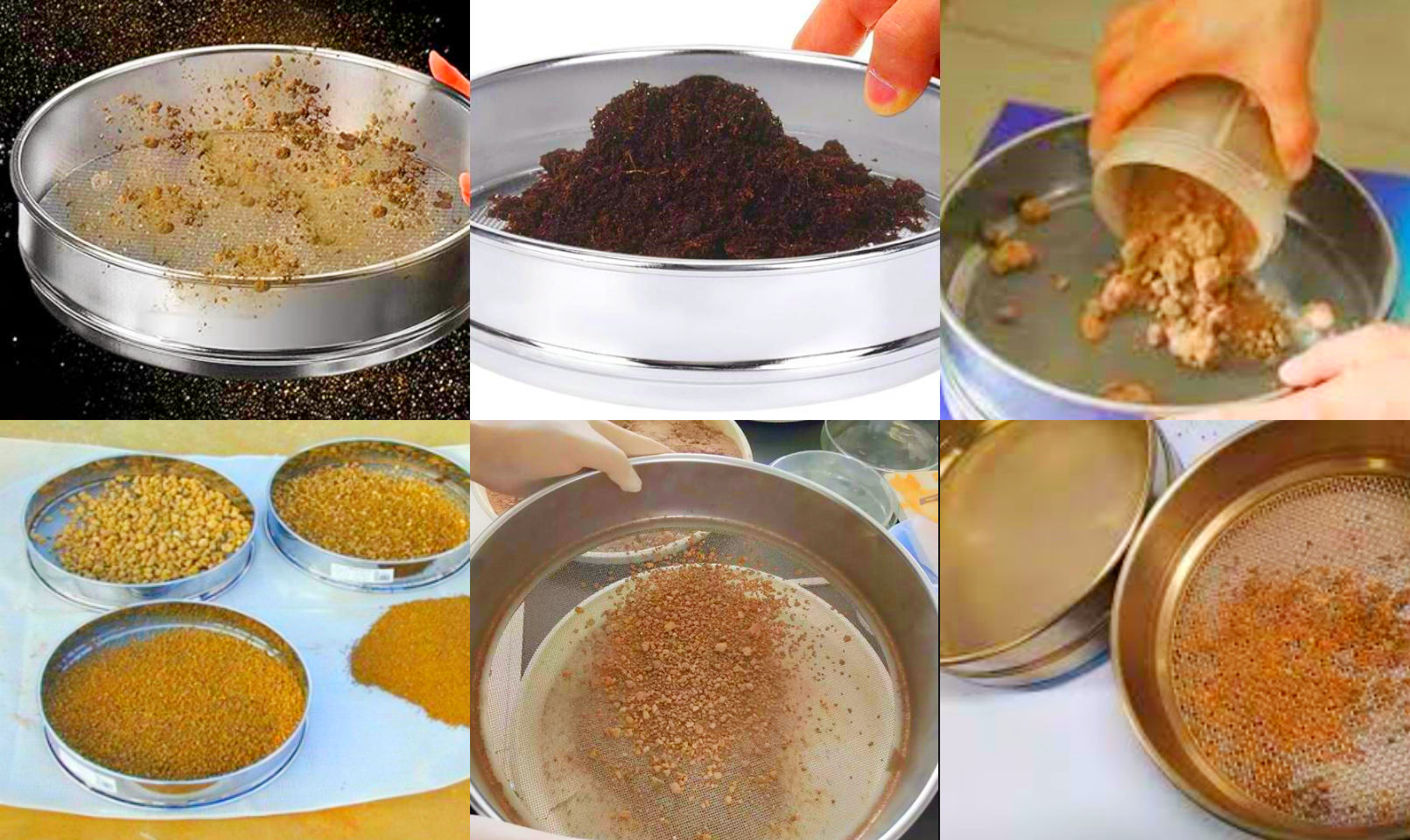
The portable field soil sieve kit is mainly used in specific scenarios such as foundation pit investigation, roadbed fill detection and landslide on-site emergency analysis in geotechnical engineering. For example, before excavating a city foundation pit, the original soil sample can be screened by particle size through the sieve kit to preliminarily determine whether the soil is sandy or silty, and to assist in determining whether it is suitable for a standard penetration test; during highway construction, on-site technicians use sieve kits to quickly screen the content of large or fine particles in the backfill to determine whether it meets the design grading requirements; in emergencies such as landslides or dam leakage, geologists can use the screening results to quickly determine the composition of the sliding soil body and provide a basis for emergency support and disposal. This type of sieve kit is easy to operate and carry, and is particularly suitable for making preliminary judgments on the composition of soil samples and guiding on-site engineering decisions.
The portable field soil sieve kit for geotechnical engineering is a tool and equipment specially designed for on-site rapid screening and particle size analysis. It is mainly used to determine the composition and distribution of soil particles, and to assist soil classification and engineering design. This kit is often used in the preliminary investigation, material acceptance and construction quality control of highway, railway, water conservancy, construction and other projects, and is particularly suitable for rapid soil sieve and engineering judgment without laboratory conditions.
What is the wet sieving process?
Wet sieving process is a sieving process assisted by a liquid (usually water or a solution containing a dispersant) to more effectively...
Fines content tester can be defined as an instrument used to quantitatively determine the content of fines powder components of a specific fineness...
Micro silica powder particle size analysis test sieve
Micro silica powder, also known as silica fume, is an ultrafine active silica material with a very small particle size, usually between 0.1-0.3 microns, which...
Agricultural gruesos Test sieves
Agricultural gruesos test sieves are experimental equipment used for particle size analysis, grading and testing of agricultural soil, gruesos...
Stainless steel frame and woven cloth
The test sieve is a laboratory equipment used for particle size analysis. Its core components usually include a stainless steel frame and woven cloth (also called a sieve)...
Laboratory Vibrating Screen for Iron Ore Pelletizing
The laboratory vibrating screen for iron ore pelletizing is a small screening equipment designed for the characteristics of iron ore pelletizing. It is used to carry out small sample...
May 28, 2025
portable field soil sieve kit for geotechnical engineering
Portable field soil sieve kit for geotechnical engineering is a lightweight tool designed to quickly ...
May 28, 2025
0.5mm stainless steel soil sieve for lab testing
0.5mm stainless steel soil sieve for lab testing refers to a stainless steel soil sieve with a sieve ...
May 26, 2025
Laboratory Vibrating Screen for Iron Ore Pelletizing
The laboratory vibrating screen for iron ore pelletizing is a small precision equipment designed for ...
May 24, 2025
The sieve particle size analyzer is a professional instrument used to determine the particle size dis...
![]()
Then we look forward to hearing from you
Contact Us
Industrials
Yanjin county forest park gate to the west 1000 meters north road sitemap
